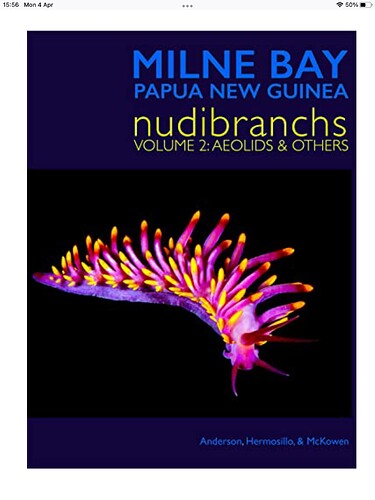Whay joy… the new edition has arrived.
We shall expect great things from you now!
Begin here https://www.ispotnature.org/communities/uk-and-ireland/view/project/759393/
There are 655 Species entries in the New (proposed) Dictionary…Just checked
Oooh! This looks like enticing bait to slowly, slowly, catchy Rigsby 
Thanks for the alert JoC 
Mind you, were I to add this to a ‘Christmas list’, I can hear the groans of the long suffering already “what!? not another obscure book only of interest to about 5 people!”
Surely a book has only to be of interest to the person owning it? Let the other 4 buy their own copies.
Just because a book has less ‘reach’ doesn’t make it less valid. In fact, you could argue the reverse is true’.
I agree without reservation.
Secondhand books from Somerfield books.
Our latest Second-Hand Catalogue is now out with a mix of Botany, Trees, Ecology, Natural History and Plant Hunters.
A PDF of the catalogue is also available here.
https://www.summerfieldbooks.com/product-tag/november-catalogue-2021/?ml_subscriber=1827684439308637993&ml_subscriber_hash=i8h9&utm_source=newsletter&utm_medium=email&utm_campaign=november_newsletter_second_hand_catalogue&utm_term=2021-11-26
.
Some bargains here in their Damaged book sale.
This one must surely appeal to some ispotters « Micro-Moth Field Tips A Guide to Finding the Early Stages in Lancashire and Cheshire – A Chronological Guide from January to December. 2nd edition« .
Yes, it is interesting. And he has just produced a volume 2. Somewhere, probably NHBS, you could buy both at a discount.
Milne Bay nudibrachs, published March 2022.
Here’s the cover of Vol two. I wish Milne Bay were nearer…
Jim’s websites, which I often cite on nudibrach posts, are good and he also sends out occasional email newsletters with news & new finds. His email is on this Scottish site.
.
http://www.nudibranch.org/Scottish%20Nudibranchs/
I’m a little surprised to admit it but I loved reading Leif Bersweden’s first book “The Orchid Hunter”. I put it off for ages because I had heard about one or two marks of immaturity in references to kindly and knowledgeable others… but it’s still a great easy read, and filled with genuine and infectious enthusiasm for botany and botanising. He has another book out this month, “Where the Wild Flowers Grow”. I think he’s good for botany (and, of course, by extension, all natural history) and we need people like him and Joshua Styles and Mya-Rose Craig if there’s to be any hope for the future.
Mya-Rose Craig; the wikipedia entry tells of a remarkable Bristol woman. Mya-Rose Craig - Wikipedia
An honorary doctorate from Bristol uni at the age of 17…
.
Thank you for the alert.
I visited Milne Bay, many years ago - but I was only interested in birds then. An amazing place!!
Wow - she’s seen half of the world’s bird species and she’s only 20! I’m over 70 and I have barely seen 10%. Let’s hope that there are still 10,000 species by the time Mya-Rose is 70.
I have just finished reading The Cottage Book, the late Victorian diary of Sir Edward Grey at his summer home in Hampshire. It is quite depressing how depauperate the countryside now is compared to that time. He had cirl buntings nesting in his garden, red-backed shrike and wryneck in the chalk pit next door, and the sheer quantity of common bird nests is astonishing.
He talks about the lady’s slippers in the woods, and lies down among them at one point then feels guilty at having squashed some. 25 June 1899: “… a mass of yellow Lady’s Slipper … To the north of Itchen Wood nature gives Ladies Slipper by the acre.” SU5236 if anyone wants to go and have a look. But Cypripedium has never been recorded in southern England according to the BSBI map. So does anyone know what he would have meant by lady’s slipper?
He also talks about musk colonising along the river. What would that have been?

Less than £3 incl.postage (eBay)
As a huge fan of the Explorer series of maps, i’m finding this a fascinating read.
Never realised that the Ordnance Survey had its roots in the crushing of the Jacobite Rebellion, with their wilderness stronghold in the Scottish Highlands being the first part of the UK to be surveyed.
And take a look at this early map from 1801 - West Ham, Stepney, Peckham etc are tiny villages and there are extensive marshes, heaths and fields right up to the very banks of the Thames in what is now central London.
Quite saddening to see what’s been lost mind you….
I worked on Deptford high street for a while, shown in middle of the map, it gave the impression of always being built up with traffic constantly thundering past but clearly not.
There is a report in Hansard from 1932 about the threat of musk rats invading the UK. I don’t know if it’s related but of course they are a North American species. I saw one in the wild in Virginia - it resembled a giant water vole. I must admit that I was a bit spooked when it swam towards me as I had no idea what it was.
Much of the area that is now Westminster was marshland originally. I worked in a building where a small river ran underneath. It was said that some of the timbers below the building had shoots growing although I never ventured down there myself. I think it was the River Tyburn but am not sure.




